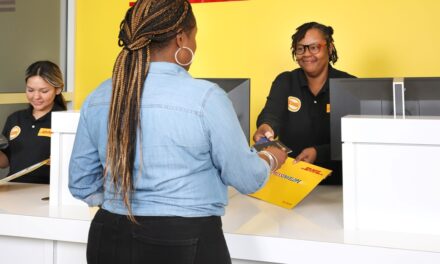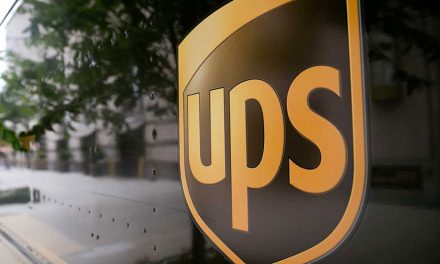
A survey of logistics: Chain reactions
Delivery companies are consolidating
"WE ARE competing with giants," says Fadi Ghandour. The Jordanian businessman has first-hand experience of consolidation in the logistics business. He is chief executive of ARAMEX International, which began life as the Middle East partner of a number of American delivery companies. Partnerships and alliances allow operators to link with others to provide services in places where they have no operations of their own. All went well until 2003, when DHL bought Airborne Express, ARAMEX's chief partner in America. The deal gave DHL a way to compete in the backyard of UPS and FedEx. But for ARAMEX it meant its link to the crucial American market was cut.
Chain reactions
To restore it, Mr Ghandour set out his own strategy of alliances and acquisitions, replicating what his big rivals were doing. ARAMEX now offers a delivery service to more than 190 countries. Last year it was listed on the Dubai stock exchange. The company is continuing to buy local operators, and recent acquisitions include logistics firms in Ireland, Britain and Egypt. "There are always entrepreneurs out there," says Mr Ghandour. "We are never going to be left without a real partner."
ARAMEX illustrates how local markets present their own, often unique opportunities for logistics companies. ARAMEX's services range from the secure delivery of credit cards and legal documents to delivering goods and accepting payments for users of souq.com, an Arab version of eBay. The company also offers a "shop and ship" service for people buying things in America, especially online. Although international deliveries have become easy, some American companies and traders on eBay will not ship goods overseas. ARAMEX helps out Middle East shopaholics by providing them with addresses in America to which goods can be shipped. It then couriers the items to the buyers.
Consolidation in the logistics industry also extends to postal services, which face a decline in standard mail as more people pay their bills online and send e-mails instead of letters. Coupled with deregulation and privatisation, this has led some mail firms to move into other areas.
Deutsche Post, which became a listed company in 2000, has been the most active with its purchases of DHL and Exel. Britain's Royal Mail has also done well with its express-package business, Parcelforce International, which has grown outside the regulated postal market. But this year there has been more deregulation in Britain and now the Royal Mail, which is still state-owned, faces new competitors. One of them is TNT, a big Dutch post and delivery service. In May it bought a courier company to allow it to deliver to about 80% of all addresses in Britain. TNT also recently formed a partnership with Japan Post, the world's second-largest postal operator after America's. Japan Post, too, is being privatised.
The internet has already had a profound effect on the delivery business, not least because it enables customers to track their goods. When parcels are being shipped by an express service they are given a tracking number, and every time the parcel's barcode is scanned at a hub or dispatch point its whereabouts are automatically recorded. Customers can follow the progress of their packages by entering their tracking number. Some systems also allow shippers to see online who has signed for an item, thanks to the digital devices now carried by delivery drivers. A London courier company even offers a service that lets people watch their packages move in real time on a web browser (see box on the next page).
Soon the labels on packages will carry a lot more information. Talk to logistics experts about the future, and they are bound to mention RFID. The acronym stands for radio frequency identification, a technology going back to the second world war. Devices using it were fitted in aircraft to bounce back radio signals, distinguishing friend from foe. Today RFID technology is already commonly used in things like motorway-toll tags and keyless-entry devices. Shrinking these devices down to the size of a barcode has now made it possible to attach them directly to products, carrying a wealth of information about them. Some are already printed as part of a product's label, using electrically conductive ink.
The next big thing
Products fitted with RFID tags could work all kinds of magic. In a supermarket, for instance, they could eliminate the need to unload the trolley and scan its content item by item. Simply pushing the trolley up to a checkout would relay all the product and price information, so supermarkets could automate most of their tills. In a warehouse, an RFID reader would record every item loaded into a truck, and a similar device at the truck's destination would record everything being unloaded.
With the addition of suitable sensors, it would become possible to tell whether a product had been dropped or kept at the wrong temperature. Finding a single product in a mountain of containers would become a simple matter of getting an RFID reader to analyse the contents–without even opening the doors. And combining RFID technology with GPS tracking would mean that nothing need ever get lost in the supply chain again.
But such magic is not yet imminent. Some companies that have carried out trials of RFID tags say that the technology is promising, but it still needs to become cheaper and more reliable in the rough-and-tumble of a commercial environment. Christian Kern, chief technology officer of InfoMedis, a Swiss company, has overseen the successful introduction of RFID tags in libraries, where they keep track of books, and medical clinics, where they identify patients to make sure they are given the right treatments. For many applications, however, he thinks the humble barcode is sufficient. "There will be applications I am not even dreaming of; that is quite possible," says Mr Kern. "But I don't expect miracles."
One of the biggest boosts to the adoption of RFID tags has come from Wal-Mart, which in 2004 began testing them in 150 stores around Dallas, Texas. By the end of 2006, the tests will be expanded to some 1,000 stores in America. Wal-Mart has already seen some benefits, including a 16% reduction in out-of-stock items in stores using RFID. Moreover, items with RFID tags were replenished three times faster than non-tagged items.
The technology promises other benefits, too. One is a reduction in inventory "shrinkage"–the industry's polite term for pilfering. There have been some concerns that RFID tags might breach personal privacy, but these are mostly overblown. When a customer buys an item the tag can be removed, just like the anti-theft devices attached to existing products.
If Wal-Mart and other retailers greatly expand their use of RFID tags, the price of each tag will keep falling and mass adoption will move closer. Within 15 years most items in shops will carry RFID tags, predicts Sebastian Taylor, an RFID expert working for IBM. Many high-value goods already carry them. Mr Taylor says the average cost of an RFID tag at present is around 20 cents. Next year he expects it to fall to around ten cents. That may seem a small price to pay to put such a clever device on, say, a television set. But attach them to millions of cans of baked beans, and the cost starts to mount up.
Even with existing technology, the amount of information that a supply chain can provide changes the way in which companies deal with both shipments and inventory. "It has allowed our customers to treat our trucks and planes as a warehouse," says David Abney, president of UPS International. "They know exactly when they are going to receive their goods and they can make decisions based on this information."
Managing operations such as replenishing stock or delivering spare parts can be outsourced too. This is an area many logistics firms are keen to expand into. "We want to manage our customers' supply chains," says Mr Abney. In the past it was only multinational companies that could afford to compete with global supply chains, not just because of the cost and complexity of operating trucks, aircraft and warehouses on different continents but also because of the difficulty of managing all these diverse elements. Yet according to Mr Abney, all that has changed. Even small companies can now afford to operate internationally by contracting out the management of the process.
The logistics business used to be all about the management of transport costs, says John Allan, "but it is now more about the ability to transform the capital nature of the business." Mr Allan ran Exel, one of the leading logistics companies before it was taken over by Deutsche Post. He has now joined the board of the German company and is chief executive of DHL Logistics. More companies, he reckons, are starting to realise that if they can move goods through a supply chain faster and more efficiently, the effect on their performance can be profound, going well beyond being able to keep stocks low.
But as supply chains become longer and more complex, they are becoming harder to look after. "This reinforces the need to have them professionally managed," says Mr Allan. He would say that, because that is what he does for a living, but he has a point. The ability to design, engineer and put in place a supply chain is no mean feat, even for a big company. Yet the employees who carry out the operations that make up much of a supply chain's individual components, such as driving trucks, overseeing warehouses or operating fork-lifts, are not always treated as though their jobs are important. Specialist logistics operations are in a better position to look after them by offering more training and better career prospects, and will be able to spread their investment in these things across several clients.
The most critical factor in logistics is people. Companies may deploy lots of powerful technology, but a close examination of successful supply chains shows they also pay a lot of attention to their employees, says John Gattorna of the Centre for Supply Chain Research at Australia's University of Wollongong. In a new book, "Living Supply Chains", he argues that this interest in people is not confined to what happens in the individual firm, but extends to customers as well. "Most successful companies also understand, almost intuitively, what is happening in their marketplace," he says.
Supply chains come in a number of different forms, and some companies use more than one for different parts of their business. One chain may run lean to keep inventory costs low, whereas another may be more flexible to enable it to respond to new opportunities as they arise. The important thing, says Mr Gattorna, is that different supply chains within an organisation must work together. These days companies cannot afford to make mistakes with their logistics. When supply chains break, the consequences can quickly become disastrous.













